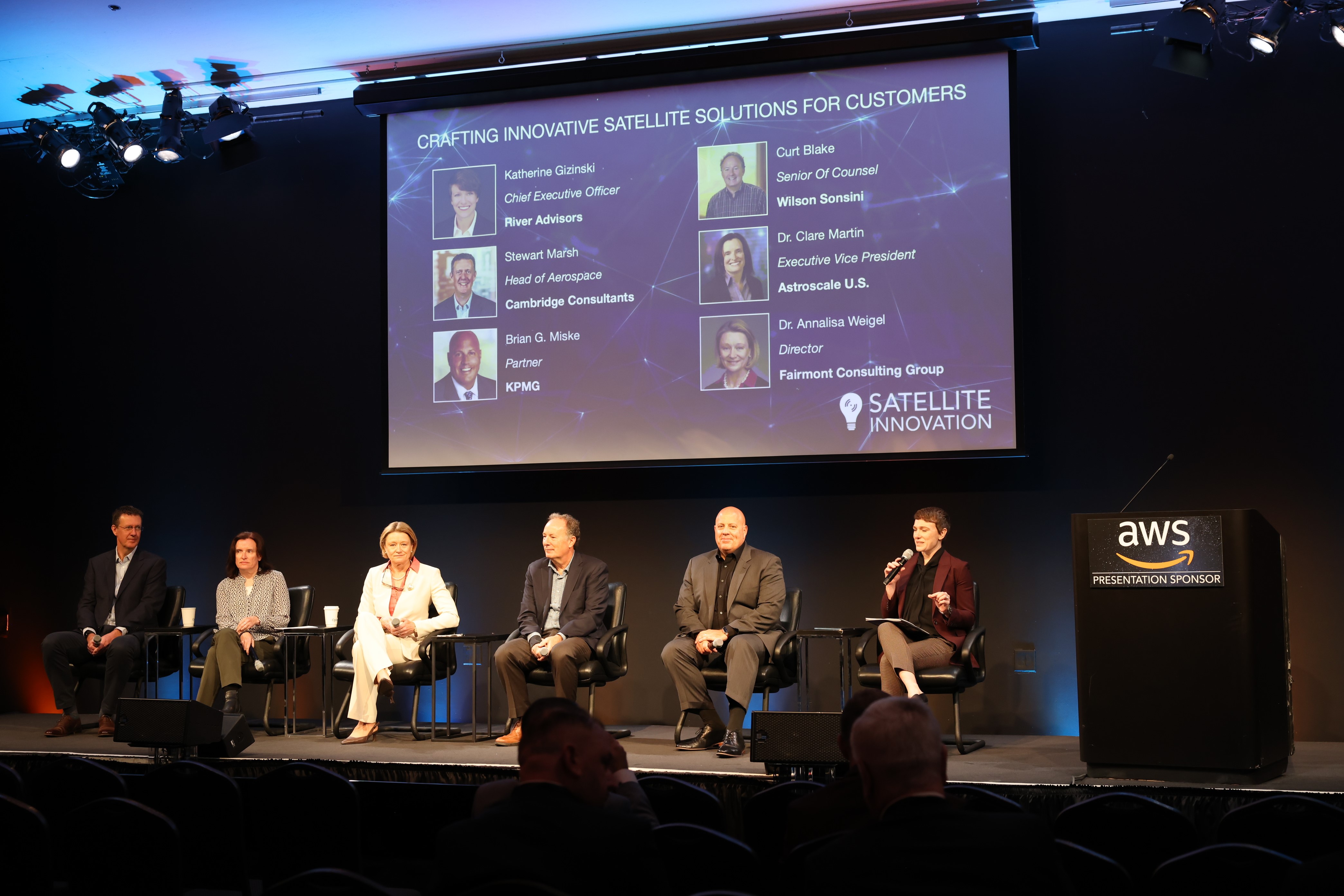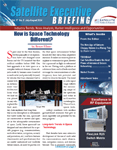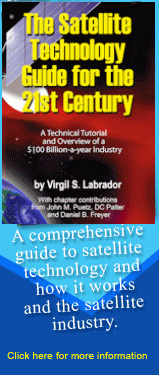Silicon Valley Space Week Highlight Key Industry Trends
by Elisabeth Tweedie
Silicon Valley, Caliif., November 3, 2024--Silicon Valley Space Week organized by Satnews Events and held in Silicon Valley, California at the end of October, covered a variety of topics, as would be expected, but for me the discussions around Direct-to-Device (D2D) were the ones that stood out the most.

Focusing on the falling launch costs, Dr. Annalisa Weigel, Director, Fairmont Consulting Group, went so far as to itemize four of the trends driving the 30x reduction in launch costs in the last 40 years. These are:
- Miniaturization of electronics, leading to decreased mass which is turn is driving down launch costs.
- Improvements in manufacturing and use of Commercial-the-shelf (COTS) products.
- Insights gained by use of artificial intelligence (AI) and machine learning (ML).
- A change in the way governments were getting involved not only in the defense market, but also in the commercial market.
All of these, but the first three in particular, lower the cost, one of the key barriers to entry to the space business, so open the door to new entrants and innovation, as we have been seeing in recent years.
Moving on to D2D, whilst most of the industry is very bullish about this, despite the currently different standards and delivery mechanisms being used by the multiple companies working in this sphere, Greg Pelton, CTO, Iridium, issued a rather somber warning, indicating that this could be a race to the bottom. He went onto explain, that as the satellite operators, partner more closely with the mobile network operators (MNOs), this could lead to a market that looks more like the cellular market, with only a few, largely undifferentiated players in each market, so that competition is primarily based on price. Nevertheless, the GSMA has forecast an additional US$30 billion revenue for the mobile market by 2035, as a result of D2D connectivity from satellite. This revenue is expected to come from the consumer, B2B/IOT and government markets. Of course, as with any partnership, this revenue will have to be split between the MNOs, satellite providers and possibly also the chipset manufacturers. Interestingly, whilst Starlink is already an active player in D2D, Amazon’s Kuiper will not have this capability in the first generation.
Standards, is of course an important consideration for this market. Pelton explained that Iridium although initially based on 2G standards, had been proprietary for many years, but in a complete change of direction, joined 3GPP in December 2023, and stated that as a result of this, it was now working with a partner, to test standards that would be incorporated into 3GPP Release 19. Viasat, which is now a key player in the mobile market, as a result of its acquisition of Inmarsat, is also pushing open standards and is one of the founding members of Mobile Satellite Services Association (MSSA).
Mark Dankberg, Chairman of the Board, Chief Executive Officer and Co-founder, Viasat was a keynote speaker the next day, and chose to use his session to talk almost exclusively about the MSSA. He emphasized the need for a global standard for D2D, saying that the “MSSA members have pre-agreed some standards and ways of working which would enable a worldwide market to emerge without challenging national sovereignty.” Viasat, as already mentioned, is one of the founding members of the MSSA and Dankberg is Chairman of the Board of the association. Other members include: Yahsat, Ligado Networks, Omnispace, Terrestar, Ericsson and MTN.
Key to developing this global standard, is cooperation between the D2D players and most importantly interoperability between the players, in order to facilitate seamless global roaming within and across satellites and constellations. As would be expected from the name, the MSSA is focused on using already licensed MSS spectrum, as opposed to using cellular standards, which some of the D2D operators are using.
The MSSA has multiple goals, these include: supporting the integration of space networks into national telecommunications infrastructure via trusted local partners and within sovereign regulatory and national security frameworks; providing a neutral forum for coordination of 3GPP Non-terrestrial Networks (NTN) and other international standards activities and achieving scale through improved coordination and cooperation mechanisms among MSS operators to maximize the utility of already available and licensed global MSS spectrum in nations desiring advanced NTN services.
As was pointed out in the D2D panel, success for the players in this industry depends on the business case. Creating seamless global roaming is a major challenge, no matter which spectrum you use, the key components of landing rights, distribution and service partners, and ubiquitous devices remain, not to mention how much extra consumers and businesses are willing to pay for guaranteed coverage everywhere.





